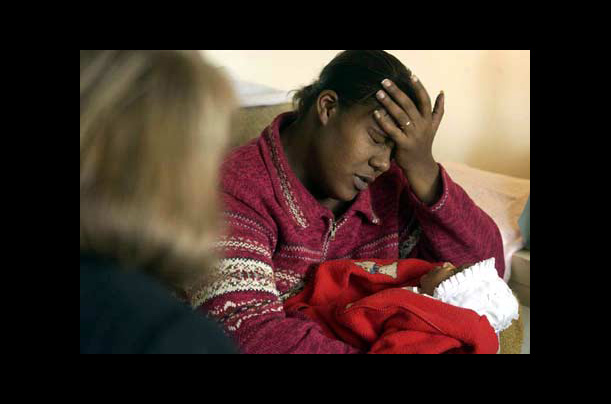
The Liberals tried. They gave money. They watched boring news specials. They held hands all the way across America. They even pretended to laugh at sketches with Robin Williams, Billy Crystal and Whoopi Goldberg. But at some point in every one-way relationship, pity turns to resentment, and now even the liberals are turning on the homeless: San Francisco has voted to reduce their benefits 85%; Santa Monica, Calif., passed laws preventing them from sleeping in the doors of shops or receiving food from unlicensed providers; Madison, Wis., is handing them a record number of tickets; Seattle banned the sale of malt liquor and Thunderbird in Pioneer Square as its initiative to shoo away the alcoholics.
Sensing an opening, the Bush Administration has decided to make the homeless problem a target of compassionate conservatism, which got pushed back after Sept. 11, when conservatism was everywhere but compassion was available only for the attack victims. And it’s putting its central domestic doctrine to the test on an issue on which the Democrats have been unable to show much progress. It’s a good choice, not only because the expectations are so low after decades of failure but also because it is unassailable in its immediate need.
With a freak-show economy in which unemployment has reached 6%–a 50% increase since November 2000–but housing prices have stayed at or near historic highs, the number of homeless appears to be at its highest in at least a decade in a wide range of places across the U.S., according to Bush’s own homelessness czar. “It’s embarrassing to say that they’re up,” says czar Philip Mangano of the number, “but it’s better to face the truth than to try to obfuscate.”
You don’t see homeless people as much as you did in the ’80s because the one great policy initiative of the past 20 years has been to move them from grates into the newest form of the poorhouse, the shelter. Even though cities are building shelters as fast as they can, the homeless are pouring out of them again, returning to the grates.
Homeless numbers are notoriously unreliable , but a Time survey of the eight jurisdictions that have good statistics shows that this population has grown significantly and that its fastest-growing segment is composed of families. Homeless parents and their kids made up roughly 15% of the case load in 1999–or, if you count every head, about 35% of all homeless people, according to the Urban Institute, a liberal D.C. think tank. The Time survey suggests that population has since increased — registering year-over-year jumps in either 2001 or 2002 . These families mainly consist of single women with kids, whose greater housing needs, compared with those of single people, make them more vulnerable to rental increases than are single people.
Even as the problem worsens, there’s little appetite in Washington for the large-scale solutions the Democrats have been advocating for 40 years: creating affordable housing and strengthening programs that attack the causes of poverty by finding people jobs, teaching them skills, giving them transportation to jobs, getting them off drugs, providing medical care — essentially trying to fix entire lives. Some homeless experts are beginning to wonder whether building shelters only exaggerates the numbers: they argue that poor people who wouldn’t otherwise be homeless are attracted to shelters as a way of quickly tapping into government assistance. “It didn’t take long for people to figure out that this was a way to scam the system,” admits Andrew Cuomo, the Secretary of Housing and Urban Development under President Bill Clinton. Given all this failure and disgust, Republicans could deal with this problem however they wanted.
The first G.O.P. member to pick up on this was Susan Baker, who had the ability to get the White House’s attention because she’s the wife of James Baker, chief of staff to Ronald Reagan, Secretary of State to Bush’s father and, more important, the guy who ran W.’s election-after-the-election campaign in Florida. Baker is co-chairwoman of the National Alliance to End Homelessness, a cause in which she became interested in the early ’80s, when she got involved in organizing D.C. food banks.
Baker read a 1998 study by University of Pennsylvania professor of social work Dennis Culhane that suggested that the most efficient solution to homelessness was to provide permanent housing to the “chronic homeless”–those helpless cases, usually the mentally ill, substance abusers or very sick — who will probably be homeless for life. The study found the chronic homeless make temporary shelters their long-term home; they take up 50% of the beds each year, even though they make up 10% of the homeless population. Culhane’s idea appeals to conservatives: it has had proved results in 20-year-old projects across the country; it gets the really hard-to-look-at people off the street; and it saves money, because administrative costs make it more expensive to put up people at a shelter than to give them their own apartment . It’s similar to the problem faced by hospitals, where the uninsured use ambulances and emergency rooms as a very expensive version of primary care. Culhane’s finding is also attractive in its simple if unspoken logic: because the mentally ill were put out into the street after the public discovered the abuses in mental hospitals and J.F.K. passed the 1963 Community Health Center Act, which deinstitutionalized 430,000 people, the plan really amounts to building much nicer, voluntary mental hospitals.